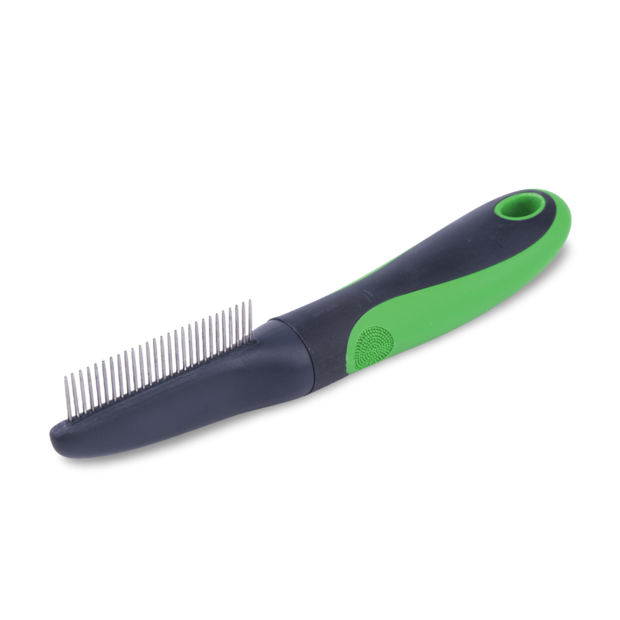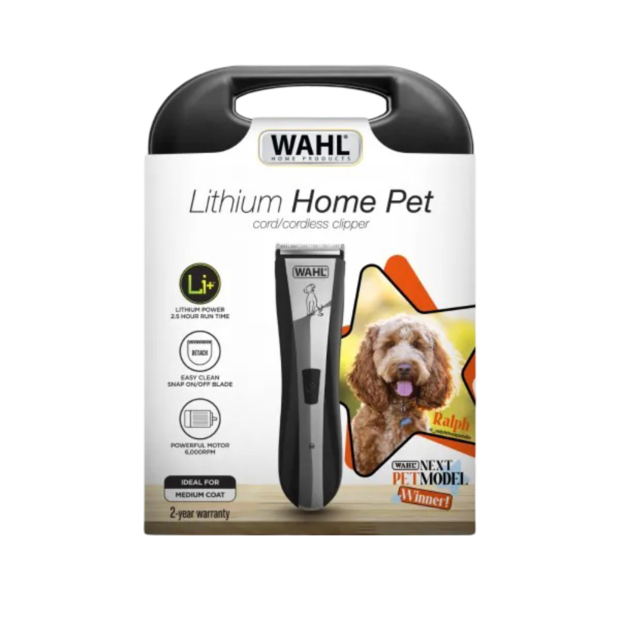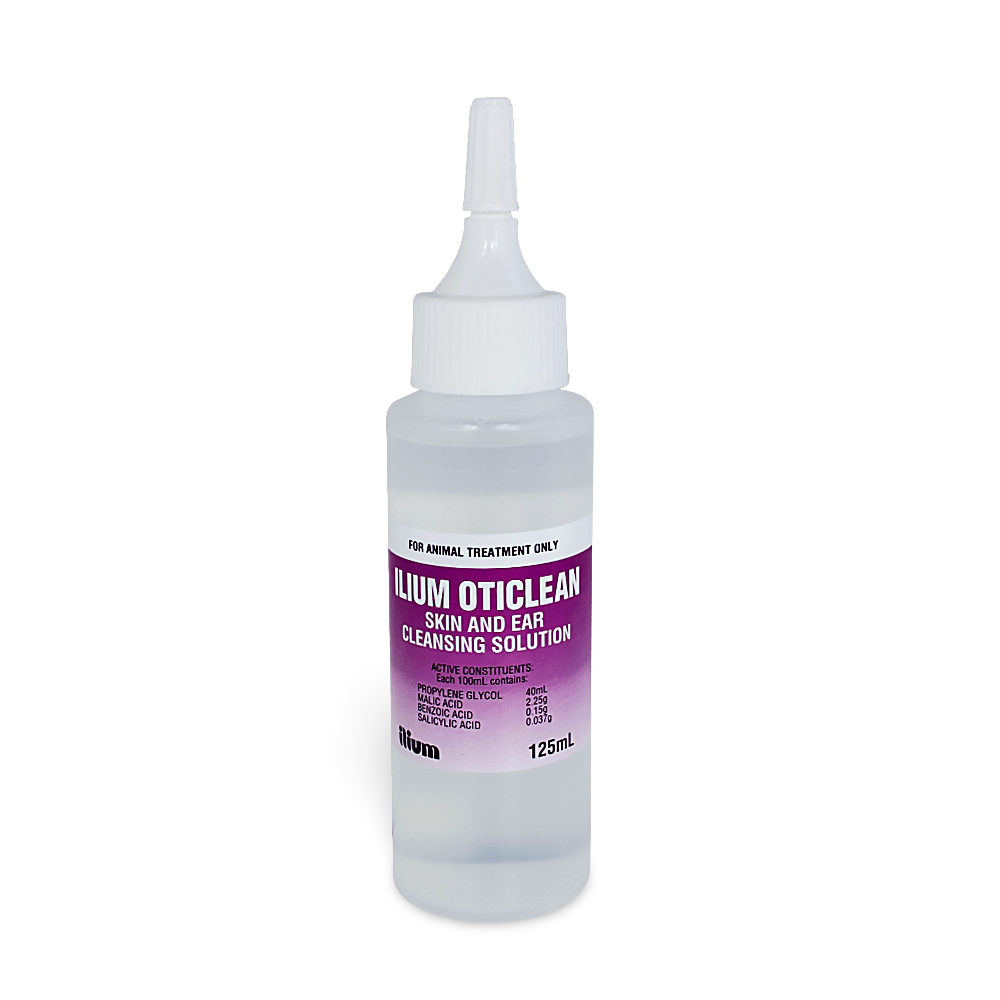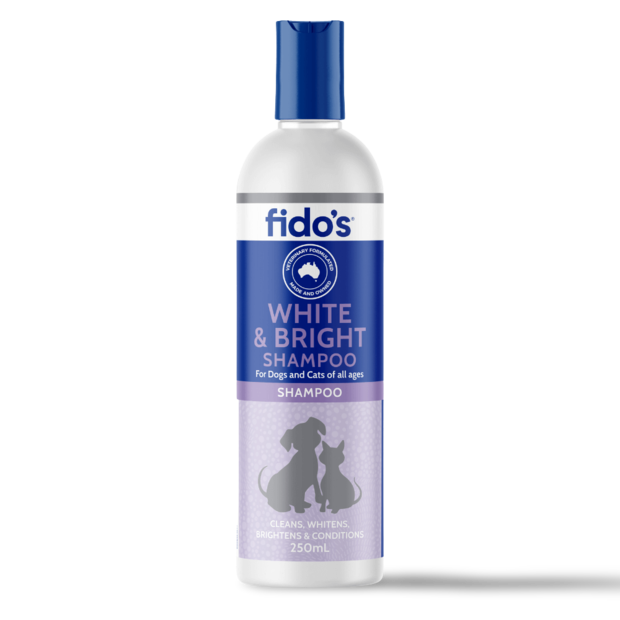Cat Grooming Guide
A complete guide to how to groom your cat
This article is written by Pet Circle's qualified veterinarian,
Whilst cats are naturally fastidiously clean, grooming your cat has benefits that are more than just skin deep! Regular grooming not only stops long coats from getting tangled into matts, it is also beneficial to cats of all coat types in many other ways. Having a grooming routine which is suitable for your cat will help to keep their coat and skin shiny and smooth - as well as hopefully keeping your home free of excess hair!
Shop All Cat Grooming Products Now
Contents:
Brushing
Shedding
Clipping
Nails
Skin Folds and Tear Staining
Ears
Teeth
Bathing
Further reading
How to Brush a Cat

The best time to start getting your cat accustomed to grooming is when they are a kitten. Start by gently using the brush for very short periods of time so that they get used to the sensation, then gradually work up to longer grooming sessions. Try to initiate the session when they are calm and restful, for example when they are asleep on your lap. When you have finished grooming, give them plenty of praise and maybe a treat too! Never forcibly brush your cat as this will result in them resenting being groomed.
- Reduced hairballs due to removal of loose hair.
- Improved muscle tone.
- Stimulation of oil production by the skin for a shiny coat.
- Provides an opportunity for you to examine your cat for new lumps and bumps or parasites.
- Strengthens the bond between you and your cat.
Short Haired Cats
Use a bristle or pin brush, rubber cat brush or deshedding tool for cats in the direction of the hair growth to work free any loose hairs in the coat. To finish use a rubber grooming mitt or damp cloth to pick up all the loose hairs and leave their coat with a shiny finish. Grooming once a week should be sufficient for most short haired cats.
Long Haired Cats
Use a wide tooth metal comb or deshedding tool like the Furminator to gently work through the entire coat. Pay close attention to the sensitive 'armpit' and inner leg areas as these are not only sensitive, but also a common place for knots to form. Gently tease apart knots or matts with your fingers, never yank or pull at them. For tough matts avoid the temptation to cut them with scissors, it can be very hard to tell where the hair ends and the skin starts and before you know it you will have cut a hole in your cat! Once you have groomed the entire coat, use a rubber mitt to pick up the hairs that you have worked loose and leave the coat smooth and shiny. You should aim to groom your long haired cat daily.
Cat Brushes and Combs

Combs and Pin Brushes are similar in that they are designed to help remove tangels from the coats of medium and long haired cats. Being smaller, combs are good for providing greater feel and control.

Rubber curry brushes and gloves are great for senior cats, and those who dislike grooming, as they are very soft and make grooming pleasurable.
How Often Should You Brush a Cat?
The frequency of brushing depends on your cat's breed and coat length. Short-haired cats will do well with one or two grooming sessions a week to help to keep your cat's skin and coat healthy and gorgeous. Longer haired cats like Maine Coons and Ragdolls, and other cats with certain conditions may require more frequent daily brushing to prevent matting of the coat.
Hairballs in Cats
Cats who suffer from hairballs will benefit from daily brushing, particularly during shedding periods. Bristle or pin brushes are a popular option for most cats, especially short haired breeds, but long haired cats may benefit more from a deshedding brush like the Furminator instead. If your cat despises being brushed, a rubber curry brush is adored by most kitties as it provides a gentle massage while stimulating blood flow and removing dead hairs.
Senior Cats
Cats in their senior years tend to be less efficient at regular grooming to keep their coat looking good. This may be exacerbated by certain conditions such as arthritis, hyperthyroidism and dental disease.
Regular, gentle brushing with a rubber curry brush like the Kong Zoom Groom will help to keep their skin and coat looking and feeling great as they age.
Can you over brush a cat?
Your cat will be pretty clear about when they have had enough of the grooming session - they will stand up and walk away, or may bat their paws at the brush. However, it's important not to over-do it particularly with certain types of brushes such as bristle, pin and slicker brushes, as overbrushing can irritate the skin. Make sure that you use these firmer brushes gently, keep sessions short, and end them before your cat has had enough.
Certain breeds of cat like the Devon Rex and Cornish Rex have short, fine fur, which is easily broken with rough and overzealous brushing. A gentle groom with a Kazoo soft-bristled cat brush or grooming glove every few days is ideal.
Cat Shedding
Shedding is a common complaint from owners. Some cats will shed little and some will shed a lot! Shedding can be seasonal or it can be consistent all year round.
More frequent brushing may be required at certain times of the year during heavy shedding periods. One way to decrease the amount of fur ending up around the house is to brush your cat regularly using a deshedding brush.
For more information about minimising the amount of hair throughout your house during these times, take a look at our article on How to Deal with Shedding Pet Hair.Cats that Don't Shed
If you are looking for a cat breed that leaves minimal hair around the house, then look no further! Whilst most cat breeds will shed, hairless breeds such as the Sphynx, Bambino, Elf, Peterbald, Donskoy and Ukrainian Levkoy may be the one for you. Rex breeds like the Devon Rex and Cornish Rex have very short, fine fur which requires very little brushing and sheds minimally.
Cat Deshedding Brushes and Tools
How to Clip a Cat's Coat

Like bathing, most cats do not require their coats to be clipped. Regular brushing is the best way to keep their coats looking good, and to prevent matting and tangles. However, tough matts which just won't budge with gentle brushing and teasing apart usually require clipping in order to be safely removed. Many owners elect to have this done by a professional groomer or veterinarian, however some pet parents are happy enough to do the clipping at home.
It's important to start slowly and make the process a positive experience for your cat.
- To start with, tire your cat out with some games or a play session, and make the environment nice and calm. A Feliway Diffuser or spray can help to keep your cat calm and relaxed.
- Turn the clippers on and without touching the clippers to their coat, give them a tasty treat and turn the clippers off again. Repeat this process until they are not phased by the sound of the clippers.
- You can then begin the process of clipping their coat. A second person to help hold your cat is very helpful. You may also like to make use of a cat lick mat with some liquid or paste treats for cats applied, to help distract your cat.
- Leaving a centimetre or so of hair rather than clipping right down to the skin helps to maintain some insulation from the elements, avoids the risk of cutting the skin and helps to prevent post-clipping hair loss.
- If required, clip around the head and face last.
- Keep the sessions short and positive - you may need to complete the entire process in several stages. Take extra care around matted fur as this can pull on the skin and make it easy to cut your cat's skin.
Cat Clippers
Knowing the difference between cat trimmers and cat clippers is important. Cat trimmers like the Wahl Pet Trimmer Pocket Pro are designed for small detailed areas and touch ups, such as around the face and head. Cat clippers are designed for longer hair.
Shop All Cat Clippers and Trimmers Now
How to Cut a Cat's Nails
Although it can sometimes be necessary to trim the nails of our feline friends, we recommend that you do not trim the nails of cats that venture outdoors. The reason for this is that outdoor cats rely on their nails to climb up trees and fences to escape from hazards (like unfriendly dogs!). Indoor cats will generally use scratching posts or trees to keep their nails in check, so if you notice that your cat's nails are excessively long it could be a sign of arthritis in your cat or other problems that are preventing them from being able to do this themselves.
If you find that you do need to clip your cat's nails, here are some tips to make it a pleasant experience for everyone!
- Get your cat used to being held, and their paws being handled from an early age. Give them lots of cat or kitten treats and praise when they allow you to handle their paws calmly
- Choose a small pair of clippers to suit the smaller size of cats nails
- Have a second person help you to hold your cat while you clip the nails
- Some cats will feel calmer when wrapped gently but firmly in a towel or blanket. This also helps you trim the nails on one paw at a time, and helps reduce the risk of being scratched.
- Start by taking just a little length of the nail to avoid cutting into the nail bed or 'quick'
- Keep sessions short and perhaps just do one paw or even nail at a time!
How to Stop the Bleeding on a Cat's Nail
Don't panic if you cut the nail too short - even veterinarians, nurses and groomers do this from time to time. Often the nail can seem to bleed a lot! Apply some pressure to the nail with a tissue or gauze, and if your cat will tolerate it, a small bandage. Just like any other small cut, the blood will clot and the bleeding will stop with time.
For more information, take a read through How to Trim Your Pet's Nails.
Cat Nail Clippers
Skin Folds and Tear Staining
Certain breeds of cats such as Persians require extra attention due to skin folds which can contain a lot of dirt build up and lead to infections. Daily cleaning with a warm, wet cloth or a cat wipe is a good way to keep on top of this.
Flat-faced cat breeds are also prone to tear staining, due to their shallow eye sockets. The normal tears spill out onto the face instead of draining down the tear duct. Cats with blocked tear ducts, eyelid abnormalities or excessive hair around their eyes are also prone to tear staining, due to the excess tear production.
How to Remove Tear Stains
Once your veterinarian has ruled out any medical issues that may be causing excessive tear production, you will naturally want to know how to remove the unsightly stains.
There are a few remedies you can try which can help remove the porphyrin pigment and leave your cat's face fresh and clean. We've listed our top recommendations below. Remember never to apply any tear removal product directly onto the eye.
How to Clean Cats Ears
Ear cleaning is very rarely required in cats, except in the case of ear infections. If you are concerned your cat may have an ear infection it's important to book a check up with your vet before cleaning. This will allow your vet to check your cat's ears and take a swab to determine the underlying cause. They will also check that your cat's ear drums are in tact, as ear cleaners and medications can be dangerous to the middle ear if the ear drum is torn. Your vet will be able to prescribe the most appropriate cleaner and medication for your cat.
If your vet has advised that ear cleaning is necessary for your cat, then technique is very important! It's important never to use a cotton bud to clean out your cat's ears! Cotton balls or tissues are much safer and will absorb any excess liquid or debris. Head shaking after cleaning will also help physically remove any waxy build up. Cats have shorter ear canals than dogs so any debris in the canal is more likely to be shaken out.
- Have a friend help you to hold your cat gently but firmly. Some cats feel safer if wrapped in a towel.
- Aim the tip of the bottle of ear cleaner into the ear canal and squeeze the bottle to apply solution liberally
- Gently massage the base of the ear, downward and inward in order to disperse the ear cleaning product throughout the ear canal for 1 minute. Then allow your cat to shake their head
- Remove the excess fluid and debris with a ball of cotton wool or tissue and also clean the inside of the ear flap
- Repeat steps 1 to 4 until the excess fluid no longer looks dirty
Wipes are a safe and easy way to keep your cat's ear flaps and the outer part of their ear canal clean on a regular basis if required.
Cat Ear Cleaning Products
Shop All Ear Care Products Now
Cat Teeth Cleaning
Dental care is one of the most important ways you can support your cat's health. Around 80% of cats aged over 3 years have some degree of dental disease. Dental disease is linked with cardiac and renal disease so maintaining good oral health is extremely important. Daily brushing is widely accepted as the gold-standard for home dental care. Check out our video below on how to keep your cat's teeth health!
Dr. Kim discusses dental care in dogs and cats. Check out other helpful tips on Pet Circle's Youtube Channel.
Veterinary dentists recommend brushing your cat's teeth with a cat toothbrush daily to prevent dental disease, and it makes sense: after all, we brush our own teeth twice daily to prevent plaque and tartar build up. When brushing your cat's teeth, be sure to use a pet friendly toothpaste, as human ones are not suitable.
It can take a while to get your cat used to having their teeth brushed, start out slowly with short sessions to get them used to the taste of the toothpaste and sensation of the brushing. Although it may seem daunting at first, with a little patience and encouragement most cats can be trained to accept toothbrushing as part of their daily routine.
For more information, take a look at Dental Care for Cats and How to Make Dental Care Easier.
Cat Toothbrushes
Bathing a Cat
Do Cats Need Baths?
It is a brave pet-parent who takes on the task of bathing their cat. Most cats don't usually need a bath, nor do they ever want one! However, sometimes a bath may be necessary if they are extremely dirty or have got something on their coat which may be dangerous for them. Certain breeds of cat like the Devon Rex and Sphynx tend to have oily skin and need to be bathed regularly to avoid becoming greasy. In these cases, a luke warm bath may be required every few weeks, using a gentle shampoo such as PAW Nutriderm Replenishing Shampoo.
Cat Shampoo
There are a number of different cat shampoos available which cater to a range of different cats. Some shampoos have been designed for cats with sensitive skin, others have been designed to enhance a cats coat colour or gloss or assist with reducing hairball production.
Shop All Cat Shampoo and Conditioner Now
How often should you bathe a cat?
For most cats, regular bathing is unnecessary as most cats are fastidious about keeping themselves clean. As mentioned above, some breeds such as the Sphynx tend to have oily skin and may need to be bathed regularly to avoid becoming greasy (which increases the risk of yeast infections). In these cases, a luke warm bath may be required every few weeks, using a gentle shampoo. We don't recommend bathing any more frequently than once every 2 weeks as it can strip the coat of it's natural oils and lead to dry skin and flakiness.
How do you bathe a cat?
If you need to bathe your cat, there are certain strategies that may help them tolerate the process a little more easily.
⢠Fill several tubs or buckets with luke warm water prior to introducing your cat. Most cats will tolerate still water better than running water.
⢠Gently place your cat in the first tub or bucket, making sure not to wet their head and work in the shampoo to a lather.
⢠Rinse as much of the lather off as you can, then transfer your cat to the other buckets to completely rinse their coat.
⢠You may like to make use of a Lick Mat with some liquid or paste treats applied, to help distract your cat.
Waterless Cat Shampoo
Waterless shampoos and cat coat sprays provide a good alternative to a bath, to help condition the coat and keep it looking and smelling great. Some coat sprays help to detangle the coat, which can be particularly helpful when grooming medium and long haired cats like Ragdolls and Maine Coons.
Shop All Waterless Shampoo Now
Further Reading
How to Deal with Shedding Pet Hair
How to Remove Tear Stains on Pets
Want to know more? Check out our Discover Page for more tips from our expert vets on keeping your pets happy and healthy.


















































